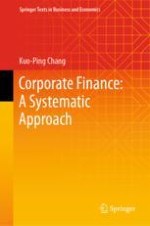2023 | OriginalPaper | Buchkapitel
9. Derivatives and Corporate Finance
verfasst von : Kuo-Ping Chang
Erschienen in: Corporate Finance: A Systematic Approach
Verlag: Springer Nature Singapore
Aktivieren Sie unsere intelligente Suche, um passende Fachinhalte oder Patente zu finden.
Wählen Sie Textabschnitte aus um mit Künstlicher Intelligenz passenden Patente zu finden. powered by
Markieren Sie Textabschnitte, um KI-gestützt weitere passende Inhalte zu finden. powered by
